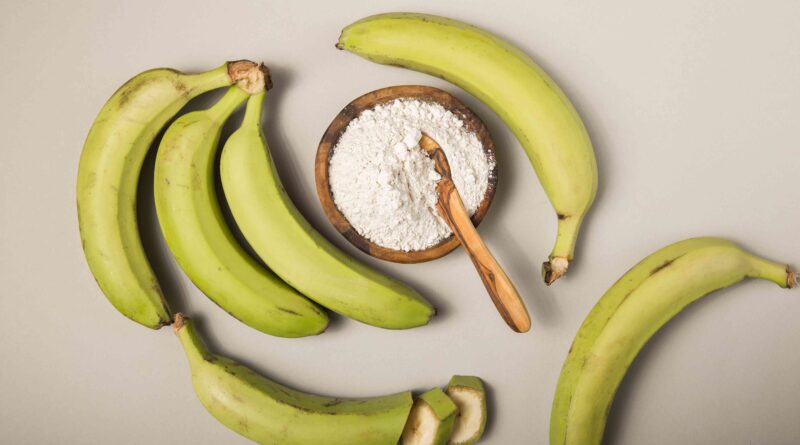A surprising reason why you may not be getting enough Fiber
Fiber is important in our diet and provides a variety of health benefits, such as reducing the risk of type 2 diabetes and heart disease. However, only 5% of people meet the Institute of Medicine’s recommended daily intake of 19 to 30 grams per day (depending on age and sex).
“In fact, most people in the US, on average, have 18 to 20 grams of fiber a day,” says Bharathi Ramesh, MS, nutritionist and clinical research coordinator at Icahn. School of Medicine at Mount Sinai, he said. Good health.
However, recent research from Cornell University has found that the numbers may not be so important—the benefits of fiber may come from more than just how much you eat. how much but how your body uses the type of fiber you eat.
The findings, published in the journal Gut Microbesrevealed that people responded differently to high-fiber diets based on their unique gut microbiome. “Not everyone gets the same benefits after using it,” study author Sri Lakshmi Sravani Devarakonda, PhD, RDN, nutritionist and assistant professor at Hunter College , he said. Good health.
The study suggests that adopting a more systematic approach to fiber intake may be an effective strategy to ensure people are consuming enough fiber, the researchers wrote.
gorchitzza2012 / Getty Images
The study focused on resistant starch, a type of dietary fiber that does not break down in the stomach and small intestine. Instead, it travels to the large intestine, where gut bacteria ferment it to make short-chain fatty acids (SCFAs), which can promote weight loss and have health benefits. anti-inflammatory and cardiovascular. Examples of foods high in resistant starch include green bananas and potatoes.
Over seven weeks, the researchers instructed 59 participants to eat a daily diet of crackers containing two types of resistant starch (RS2 and RS4) and digestible starch for ten days, with a “washout” period of five days between each course. The researchers collected stool and saliva samples before and after the study to perform genetic sequencing, look at gut demographics, and measure SCFA production.
The researchers found that the participants’ baseline characteristics and variables predicted whether they benefited from eating resistant starch. Because everyone’s microbiome is different, some people have experienced positive changes from resistant starch supplementation, such as improved microbial diversity and increased SCFA production. For others, the response was weak.
However, when participants ate digestible starch after resistant starch, they saw increased levels of short-chain fatty acids — a finding Devarakonda found surprising. researchers.
“Gut health research is really, really complicated. We haven’t even scratched the surface,” said Ramesh. “So I think studies like this are really important. They’re breaking things down little by little.” and they put all this evidence together to get a…clear picture of how the gut microbiome plays a role in our health.”
Matthew Landry, PhD, RDN, a registered dietitian and nutrition and health promotion researcher at the University of California, Irvine, cautioned against looking at education as a reason to skip all the fiber. He pointed out that fiber has other benefits that researchers have not explored, such as delaying the absorption of sugar, which leads to control of blood sugar levels.
Currently, there is no way to test whether you might benefit from a resistant starch supplement outside of a research lab.
Although stool samples can provide insight into your microbiome, “it’s really difficult to do those kinds of tests to know whether or not we’re going to benefit from this,” Landry said. Many tests can tell you what species are in your gut, but there isn’t enough research to provide practical advice on how to make your diet your own.
Devarakonda hopes that as the field of nutrition expands, people will be able to focus on the type of fiber that benefits them so they won’t need to struggle to get the recommended amount each day. “I think that will help because eating some type of fiber in small amounts is easier for people,” he said.
“For now, it’s important to eat a variety of dietary fibers, not just rely on one type of supplement and expect all the benefits from it,” said Devarakonda.
To get fiber, experts recommend focusing on food rather than supplements. Making simple changes can boost fiber intake, such as including more fruits, vegetables and beans in your diet, Ramesh said. She also says that choosing canned foods like chickpeas can be an easy way to increase your fiber intake.
“I also highly recommend smoothies because they are a quick way to get fiber into your diet,” said Ramesh. It’s also a meal in itself, so don’t skip breakfast.
If you want to focus on eating resistant starch, Ramesh notes that great sources include unripe bananas and whole grains. Other unexpected sources? Leftover pasta and rice, both of which increase the level of resistant starch after cooling.
Be aware of one important symptom of not getting enough fiber: constipation. “If someone has chronic constipation, you may need to consider fiber supplementation,” Ramesh said. But that should be added to whole foods.
“At the end of the day,” Landry said, it’s important to remember that “we can all benefit from more fiber.”
#surprising #reason #Fiber
